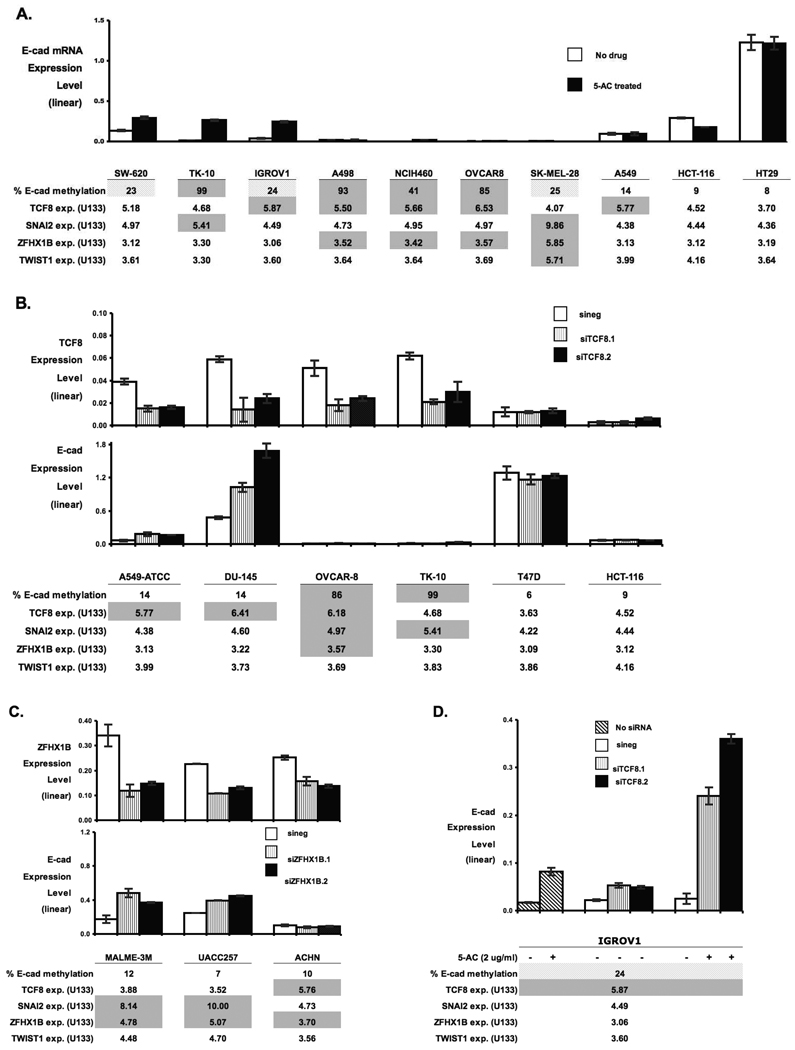Figure 2.
Branched-DNA assay measurement of the effect of 5-AC or siRNA treatment on E-cad transcript expression. In all cases, the bar graphs depict branched DNA assay measurements of transcript levels. The Y-axis of each bar is a cyclophilin-normalized expression. The error bars indicate one standard deviation for duplicate measurements. Factors that are proposed as suppressive of E-cad expression are shown in tabular form (log2 data from Table 1), with grayed or cross-hatched blocks indicating proposed repressive levels (as described in Table 1). Because of variations in the number of cells harvested, we do not consider the branched-DNA assay expression levels to be accurate for cross-cell line comparisons. A. The effect of 5-AC on E-cad expression levels. The open bars indicate E-cad expression in the absence of drug. The black bars indicate E-cad expression after 5-AC treatment for 24 hours at 2, 0.5, 0.5, 2, 2, 0.5, 2, 2, 0.1, and 1 mg/ml (for SW-620, TK-10, IGROV1, A498, NCI-H460, OVCAR-8, SK-MEL-28, A549-ATCC, HCT-116, and HT29, respectively). B. The effect of TCF8 down-regulation by siRNA on E-cad expression levels. Six cell lines were treated with siNeg (open bars), siTCF8.1 (vertically-lined bars), or siTCF8.2 (black bars), and their TCF8 and E-cad expression levels determined. C. The effect of ZFHX1B down-regulation by siRNA on E-cad expression levels. Three cell lines were treated with siNeg (open bars), siZFHX1B.1 (vertically-lined bars), or siZFHX1B.2 (black bars), and their ZFHX1B and E-cad expression levels determined. D. The effect of combined 5-AC treatment and TCF8 down-regulation by siRNA on E-cad expression levels. IGROV1 was treated with no siRNA (left-diagonal strips), siNeg (open bars), siTCF8.1 (vertically lined bars), or siTCF8.2 (black bars). The cells were treated with 5-AC treatment (+) or no drug (−) for 24 hours at 2 µg/ml.

